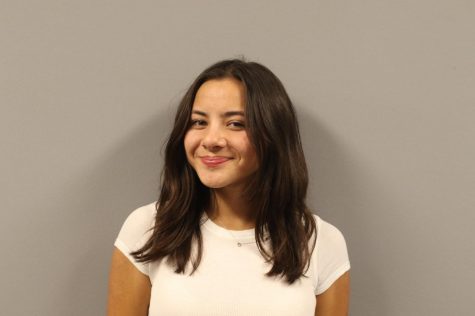Slicing Open Student Territories
Steps Parker is Taking to Promote Community
Parker advertises as an inclusive school, but is it? While initiatives like Racial Dialogues helped spark conversation, as Director of Diversity, Equity and Inclusion Dina Levi understands it, the conversation too often ended with the programming. To add to this problem, students have historically been territorial with space in the building, feeling entitled to “their” grade’s space instead of opening all spaces to the full community that Parker advertises.
In light of the “sophomore bench” situation from last year, when some students felt harassed, and senior girls reportedly also being harassed in their classes a year ago, Levi set to work to help Parker become an all-inclusive, community-driven school, creating the SLICE program to host conversations about topics like identity and race.
“You have a day where you have all these great conversations, and then the next day it’s like ‘Okay, back to math class,’” Levi said. “The idea behind SLICE is that the conversations that students are having in the workshops get followed up in their classes, they get followed up in Grade Room, and they come throughout the year, so it’s not just not this one-off program.”
SLICE was created over the summer to help students engage in conversations about who they are to themselves, how they experience the world, and how they can learn from other people’s experiences and identity. There was a two-day training during which facilitators went through the workshops the freshmen would be doing and also learned how to go about leading those discussions.
Students in the Upper School were asked to sign up to become facilitators via email and were then interviewed for the position. Part of the training was spent with logistics and program content, the other part diving deeper into the concepts themselves.
“I learned to be more aware and sensitive to other people‘s feelings,” junior Zoe Patinkin said about her experience as a facilitator. “Yes, it’s an awareness, but it’s deeper than an awareness.”
Patinkin, along with the other facilitators, learned tactics in facilitating these discussions, like how silence is important to make people speak up.
SLICE was created to be an environment in which freshmen can talk about their identity around both new people and people they have known for a long time. According to freshman Sophia Saker, the older facilitators sometimes cast an intimidating shadow over freshmen who want to talk about their identity in an open environment.
“Having upperclassmen in our SLICE meetings made me feel intimidated to speak because outside of SLICE, they were still upperclassmen to us,” Saker said, “and to them we are just freshmen.”
Patinkin gave a few possible solutions: spreading out the freshmen and leaders, or adding small groups to fix the ratio of the freshmen and the facilitators.
Upper School English teacher Cory Zeller, one of the teachers that was first approached by the freshmen that complained about the “sophomore bench” last year, has reflected on gender and race at Parker.
“So in our school, it ends up being the females who have to fight to be heard, and it ends up being our students of color who have to fight to be acknowledged and respected,” Zeller said. “That culture shift needs to happen within the dominant culture.”
Territorialism was one of the first problems Upper School Dean Edward Amos faced when coming to Parker last fall. One of Amos’s main goals this year is to make Parker–all of Parker–a comfortable space for any student. Whether that means reconfiguring certain spaces or raising awareness, he is willing to do whatever it takes.
“I do think as a school we have a responsibility to provide a safe and secure environment,” Amos said. “I do think we need to take whatever steps we have to to make sure that that happens.”
Space reconfiguration, according to Amos, would aim not only to increase comfort and openness, but to allow for an increase in enrollment too. One idea, Amos said, is to add tables and chairs in the hallway where the freshmen and sophomore lockers are. This plan is intended to create a more studious atmosphere. Another idea is the addition of possible high chairs and tables. There is no set date for these changes to be made, according to Amos.







